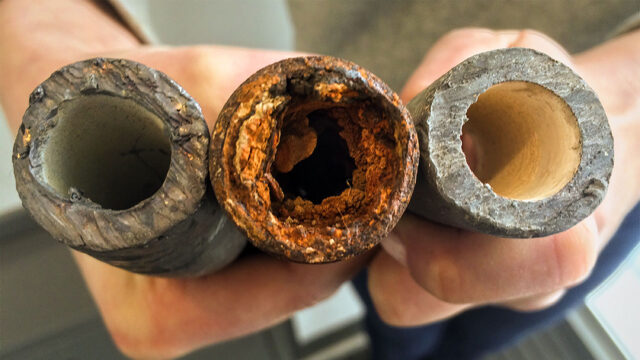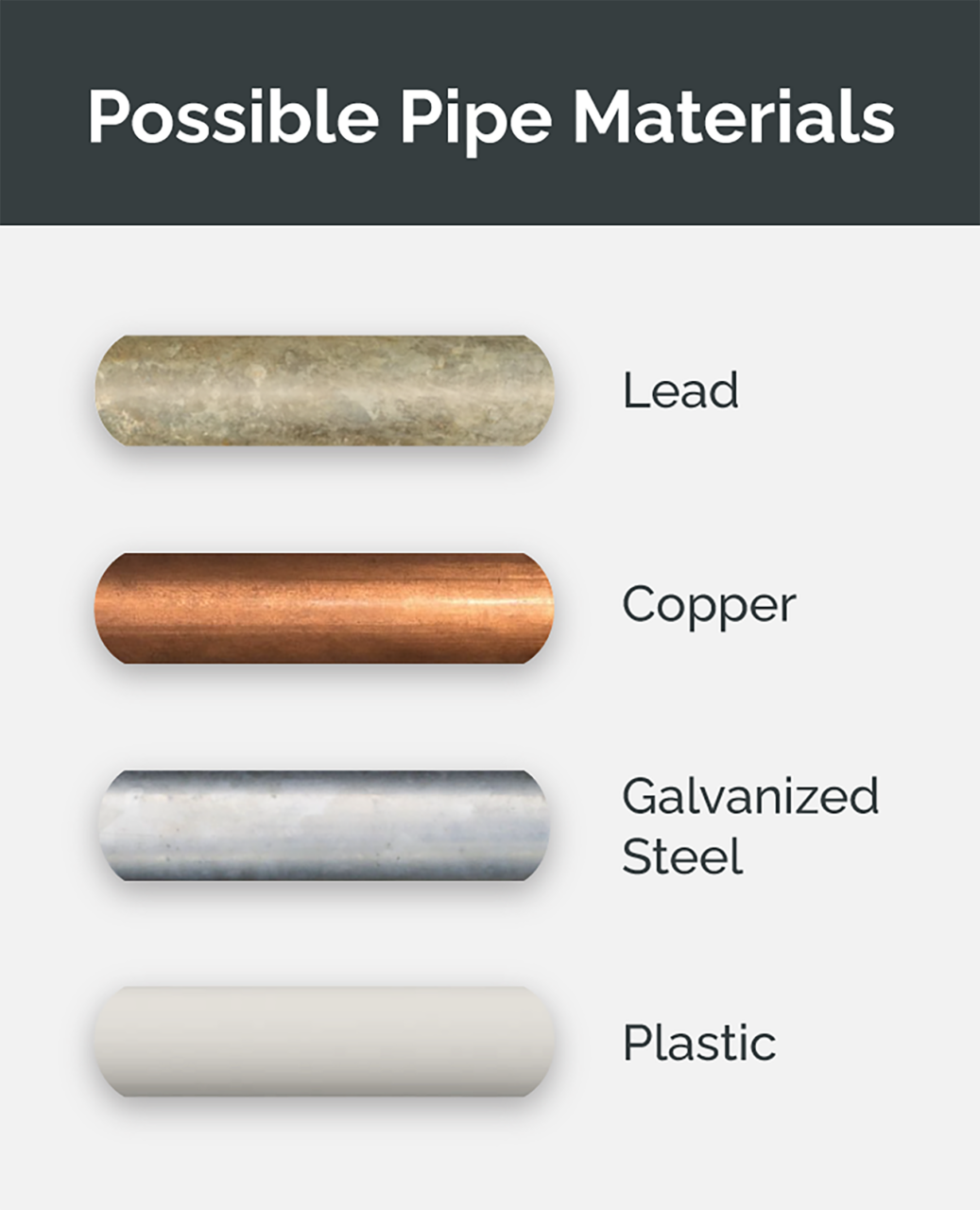Safe Water Quest: Tackling Lead Exposure With Service Line Inventories

The US Environmental Protection Agency (US EPA) mandates that all public water systems develop an inventory of their service lines and prepare a lead service line replacement plan by October 2024. Communities must act swiftly to meet this rule, published as the Lead and Copper Rule Revisions (40 CFR Part 141, 40 CFR Part 142). Here we break down the regulations, who is responsible, how to comply, transparency, and finally, funding.
Lead in Drinking Water
Water service lines supply drinking water from the water main to the home. When service lines made of lead (lead service lines) corrode, lead can enter the water and contribute to lead exposure in drinking water. Lead presents serious health concerns, particularly for infants and young children, that have earned the US EPA’s attention since 1991 when the first Lead and Copper Rule (LCR) was published. In 2021, the US EPA released the Lead and Copper Rule Revisions (LCRR), which drive today’s compliance requirement for lead service line inventory and replacement plans. In November 2023, the US EPA proposed the Lead and Copper Rule Improvements (LCRI) and anticipates finalizing the rule in October 2024. The US EPA published the “Rule Comparison Guide for Public Water Systems” to assist in understanding the proposed LCRI.
Key components of the proposed LCRI include:
- Achieving 100% lead pipe replacement within 10 years
- Locating legacy lead pipes
- Improving tap sampling
- Lowering the lead action level
- Strengthening protections to reduce exposure
Today’s Regulations
To comply with the current LCRR and the proposed LCRI, all systems must develop an initial lead service line inventory. This catalog of service lines becomes the foundation for a comprehensive approach to identifying lead service lines, replacing them, educating the community, and tackling lead exposure in drinking water.
Responsible Entities
Those subject to the LCRR include:
- Community Water Systems: Public water systems that serve at least 15 service connections used by year-round residents or regularly serve at least 25 year-round residents (40 CFR §141.2)
- Non-transient, Non-community Water Systems: Public water systems that are not community water systems and regularly serve at least 25 of the same persons over six months per year (40 CFR §141.2)
While there are a variety of ownership agreements for providing water service in the US, the rules require that both water system-owned and customer-owned portions of service lines are inventoried. Water system providers are responsible for the inventory of all users connected to their system, including out-of-district users. Responsibility can be complex though. For example, when a village water district provides water to a consecutive town system, such as a system with a master meter at the village limit, the village bills the town in bulk and the town bills the individual customers. In this arrangement, the consecutive system (the town) is responsible for the town inventory. However, in a customer-based intermunicipal arrangement where a village bills customers in both the village and the town, the village is responsible for the inventory of all customers served in both the village and in the town.
 Inventory Components
Inventory Components
Public water systems must prepare and maintain an inventory of service line materials or demonstrate the absence of lead service lines by October 16, 2024.
The lead service line inventory must include the following elements:
- Materials classification (lead, galvanized requiring replacement, non-lead, unknown) of water system-owned and customer-owned portions of each service line connected to the public water distribution system
- Location identifier for any lead or galvanized service line requiring replacement
- Inventory must be made publicly available
Additional elements are recommended to support asset management, document the existence of lead connections, and streamline future reporting.
Replacement Plans
Water systems must also submit a lead service line replacement plan by October 16, 2024, if it contains lead service lines, galvanized service lines requiring replacement (galvanized lines that are or were downstream of a lead service line or cannot be verified otherwise), or lead status unknown service lines (material is unknown).
The lead service line replacement plan must include:
- Strategy for determining materials of lead status unknown service lines
- Procedure for conducting full lead service line replacement
- Strategy for informing customers before a replacement
- Procedures to flush lines
- Replacement prioritization strategy
- Funding strategy
The US EPA’s “Guidance for Developing and Maintaining a Service Line Inventory” and “Service Line Inventory Template,” both released in 2022, outline these requirements and additional recommendations.
Public Transparency
Public health is at the center of the US EPA’s actions to protect public health and lead service line inventories require public transparency. Community water systems and non-transient, non-community water systems must make a portion of their inventory publicly available. Where lead, galvanized requiring replacement, or lead status unknown lines are identified, water systems must notify the public or users of the involved building(s) through an annual notice to all existing and new customers served. If a water system serves more than 50,000 people, the inventory must be publicly available online.
Funding for Inventories and Replacements
State and federal funding is available to assist municipalities in completing lead service line inventories and replacements. Additional funding and other grant programs that support healthy, thriving communities may become available to reduce costs.
| AGENCY | PROGRAM TITLE | MAXIMUM GRANT | LOCAL MATCH |
| Bipartisan Infrastructure Law | BIL Lead Service Line | $15,000,000 over the next five years (FY 2022-2026) for identification and replacement | Defined by state, refer to Drinking Water State Revolving Fund (DWSRF) Priority Listing information |
| US Housing and Urban Development (HUD) Office of Community Renewal | Community Development Block Grant (CDBG) | Varies by state and community. NYS non-entitlement is $1,000,000 for CDBG Public Infrastructure | None Identified |
| US Environmental Protection Agency | Water Infrastructure Finance and Innovation Act | Long-term, low-cost supplemental loans. $20 million minimum project size for large communities. $5 million minimum project size for small communities. | |
| US Environmental Protection Agency | WIIN Reducing Lead in Drinking Water Grant in Disadvantaged Communities and Schools | $10,000,000 | 20% of total project |
| US Economic Development Administration | Public Works and Economic Development Program | $600,000 – $5,000,000 | 20% – 50% dependent on economic distress level |
| US Department of Agriculture Rural Development | Water & Waste Disposal Loan & Grant Program | Long-term loans with repayment over 40 years. Grants may be available. | |
| National Rural Water Association | Rural Water Loan Fund | Long-term loans up to $200,000 or 75% of project costs. Emergency loans are 90-day with no interest. Immediate turnaround on applications. | |
| State Agencies | Drinking Water State Revolving Fund (DWSRF) – distribution of BIL Funding and additional state appropriations | Appropriation varies by state, refer to DWSRF Priority Listing information | Match requirement varies by state and community need |
A Final Word
Lead in drinking water is a growing community health concern. Water systems are required to provide more information to consumers on an annual basis beginning in October 2024. Engineers, program managers, planners, and data intelligence specialists at LaBella are actively working with municipalities to catalog lead service lines, prepare replacement plans, and implement improvements to protect community members. Partnerships between drinking water service providers, engineers, health departments, community organizations, and residents can effectively and efficiently advance the quest for safe drinking water.

About the Author
Jennifer Vaughn, EITCivil Engineer/Grant Specialist
With 14 years of experience as a civil/environmental engineer and a grant specialist, Jennifer supports municipal clients in prioritizing projects, securing grant funds, completing studies, and executing community improvement projects. She has served over 50 municipalities, helping them to secure more than $75 million in grant funding from state and federal agencies. Additionally, Jennifer has assisted in the development of water and wastewater preliminary engineering reports, asset management plans, and strategic economic development plans. Prior to municipal consulting, she worked as an Environmental Engineer, supporting compliance with state and federal regulations.